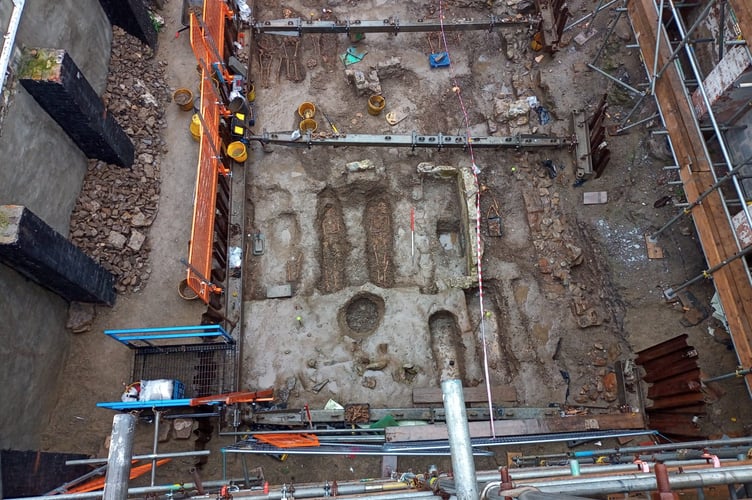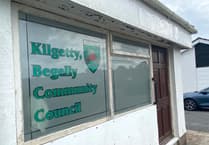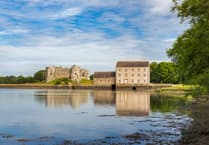The ruins of a medieval cemetery have been uncovered under a former department store - and it contains the remains of more than 270 people.
The ongoing archaeology project, which is in Haverfordwest, is focused on the former Ocky White site, where the department store stood for more than 100 years.
Dyfed Archeological Trust is working with Pembrokeshire County Council on the project, which is uncovering the cemetery believed to be connected to Dominican-founded monastery St Saviour’s Priory.
The excavation is one of the first of its kind in the medieval town of Haverfordwest, and has so far uncovered 272 skeletons buried in the cemetery.
The priory was founded in approximately 1256, and was in existence until the 16th century, when archeologists think it was demolished.
After that point, the site became an iron foundry until 1904, and the Ocky White department store building was then constructed.
Ocky White remained open until 2013, and Pembrokeshire County Council is now working on the site as part of its Western Quay development.

Fran Murphy, head of DAT (Dyfed Archeological Trust), commented: “It’s such a rare thing to be involved in in this part of the world.
“As a country, excavations in areas of medieval towns in Wales is very rare and the further west the rarer.
“With a cemetery like this, what it allows you to do is look at the skeletal material for a snapshot of the population.
“Even though it’s a priory cemetery, it isn’t just monks here. This became a town cemetery for people who wanted to be as near to the church as possible.
“People of all ages were buried there, so when you’re looking at the skeletal remains there is so much you can learn from them - like how long people were living, what they died from, the ways their bodies reacted to their work, how strong they were etc.
“It tells you a lot about who was living in Haverfordwest over the years.
“It’s been a privilege to do this. We had the opportunity to use an old shop across the road as a finds-processing site which meant that we could show the finds to the public and that’s been wonderful.
“It connects people with the past and how their town has changed.”





Comments
This article has no comments yet. Be the first to leave a comment.